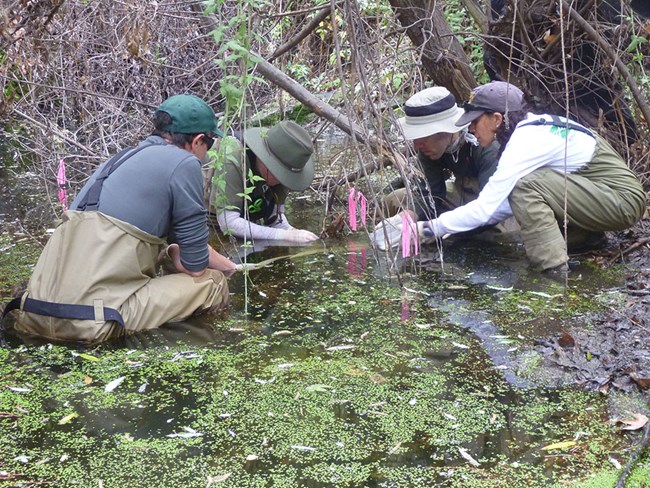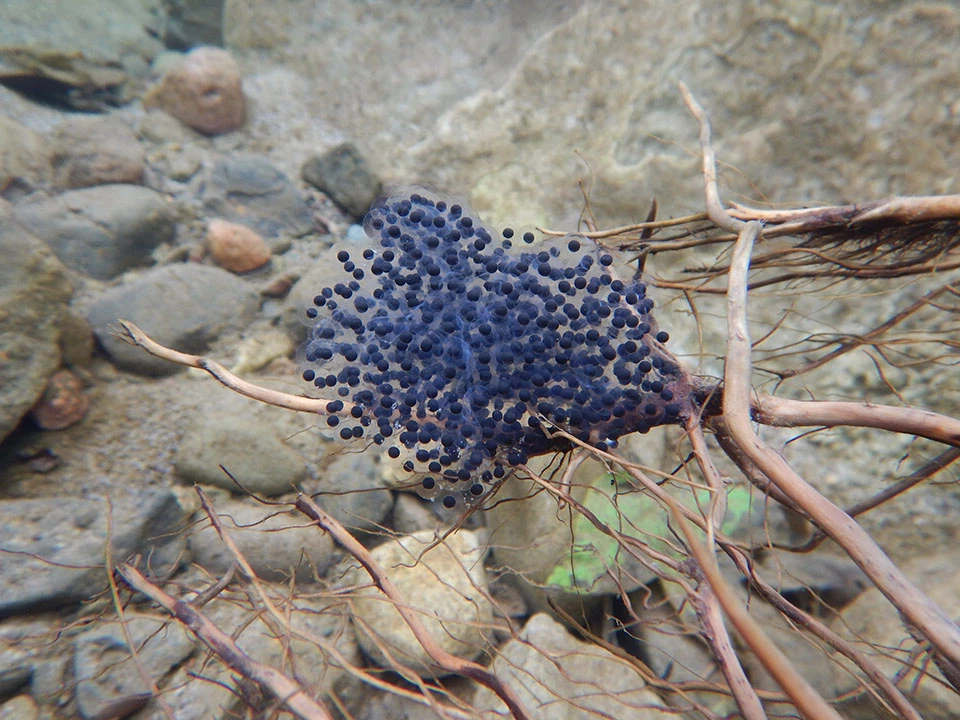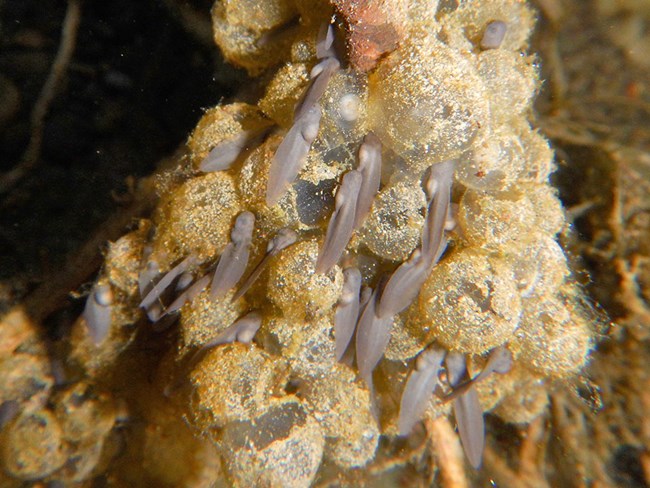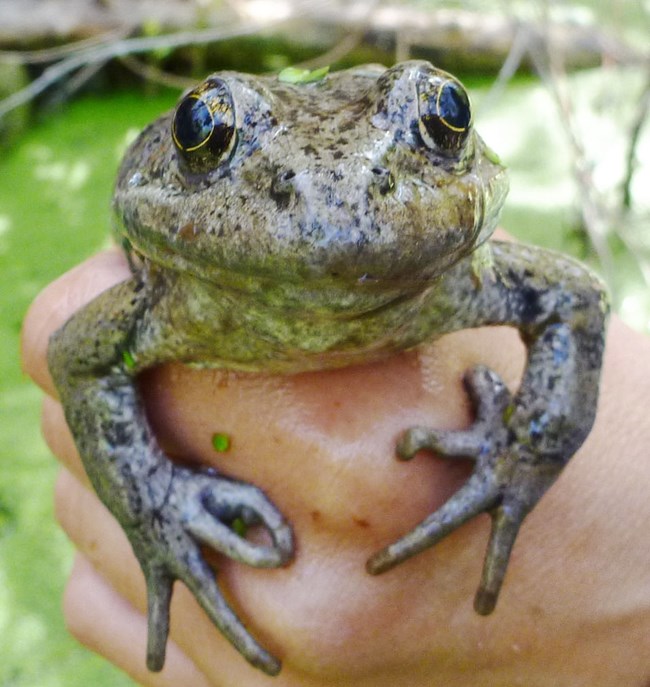Last updated: August 17, 2017
Article
Rare Frogs Breed in New Home
June 2017 - In 2014, National Park Service biologist Katy Delaney hoped for the best as she helped release hundreds of California red-legged frog tadpoles from protective rearing pens into two streams in the Santa Monica Mountains. The streams had been chosen carefully, but there was still no way to be sure that the tadpoles would survive on their own.

NPS
The tadpoles were reared from partial egg masses translocated from a thriving but isolated frog population in the nearby Simi Hills. California red-legged frogs had not been seen in Santa Monica Mountains streams since the 1970s. The species is listed as threatened under the Endangered Species Act, and the ongoing effort to translocate egg masses aims to give them a boost. Re-establishing self-sustaining populations in the Santa Monica Mountains is a good safeguard against the species disappearing from the region altogether. It has already been extirpated from 70 percent of its range.
There were positive signs during the first years of the re-introduction effort. Biologists noted tadpoles growing into froglets and emerging from the streams as young frogs. In time, they also started spotting larger frogs around the translocation sites. They expanded the project to include two more streams in 2016, but the question remained. Would enough frogs survive the 2-3 years it typically takes them to mature, and start laying egg masses of their own?
This March, biologists got their answer. Cheers and tears ensued as field teams reported finding nine egg masses in one of the original translocation streams! They soon found three more, recording 12 egg masses in total. If we understand California red-legged frog biology correctly, each egg mass was probably laid by a different surviving female from the initial 2014 translocation. Who fertilized the egg masses is more of a mystery since males may mature faster and mate with multiple partners. Still, they were probably survivors of the 2014 or 2015 translocations.

NPS

NPS
The egg masses were laid up and down the stream in pools that had been cleared out and filled up by the past winter’s rains. Biologists monitored them closely. Sure enough, after 2-3 weeks, hundreds of tiny tadpoles swarmed around, feeding on what was left of the their algae-covered, gelatinous egg masses. After a few more weeks, they had all dispersed.
These tadpoles are the best evidence yet that the re-introduction project has the potential to succeed. While it’s impossible to know exactly how many there are, their numbers also seem encouraging. Given 12 egg masses each containing hundreds of eggs, the number of tadpoles this year probably outnumbers the 237 tadpoles released into the same stream in 2014. Perhaps this new California red-legged frog population has the potential not only to persist, but to grow.

NPS
Translocation efforts also continued this year, culminating in the release of hundreds of additional tadpoles. Now, biologists can’t be sure which tadpoles are which. Either way, it’s exciting to know that some have a real chance at surviving and reproducing.
Delaney now hopes to find evidence of California red-legged frog breeding at the other reintroduction sites in the years to come. She and other project biologists plan to keep up translocation efforts at the original release sites for another two years or more. This will ensure that the new populations are as big and strong as possible before they’re on their own. At the newer reintroduction sites, translocations will continue for another four years or more. Once translocations end, biologists will check up on the species yearly as a part of the Mediterranean Coast Network’s Aquatic Amphibian Monitoring Program.
Prepared by the Mediterranean Coast Inventory and Monitoring Network.
